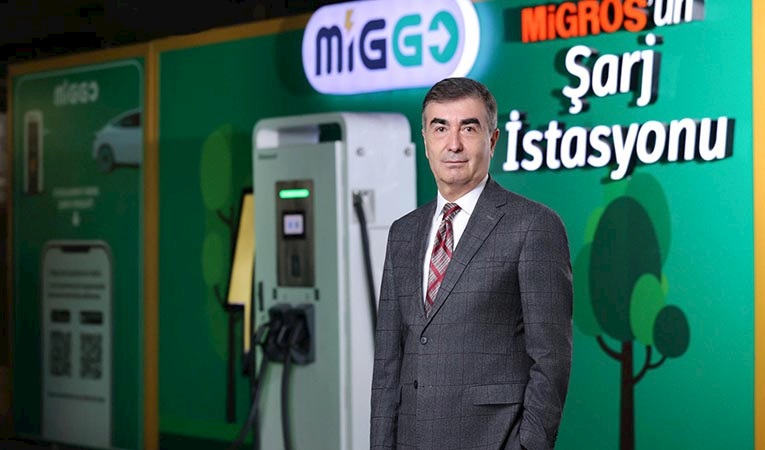
-
BIST 100
 10514,20%0,07En Düşük10481,45En Yüksek10543,98
10514,20%0,07En Düşük10481,45En Yüksek10543,98 -
DOLAR
 36,52%0,13Alış36,5216Satış36,5276En Yüksek36,5580
36,52%0,13Alış36,5216Satış36,5276En Yüksek36,5580 -
EURO
 39,50%-0,16Alış39,4999Satış39,5089En Yüksek39,7435
39,50%-0,16Alış39,4999Satış39,5089En Yüksek39,7435 -
EUR/USD
 1,08%-0,18Alış1,0817Satış1,0818En Yüksek1,0873
1,08%-0,18Alış1,0817Satış1,0818En Yüksek1,0873 -
ALTIN
 3411,44%-0,12Alış3410,97Satış3411,91En Yüksek3426,19
3411,44%-0,12Alış3410,97Satış3411,91En Yüksek3426,19
-
BIST 100
 10514,20%0,07En Düşük10481,45En Yüksek10543,98
10514,20%0,07En Düşük10481,45En Yüksek10543,98 -
DOLAR
 36,52%0,13Alış36,5216Satış36,5276En Yüksek36,5580
36,52%0,13Alış36,5216Satış36,5276En Yüksek36,5580 -
EURO
 39,50%-0,16Alış39,4999Satış39,5089En Yüksek39,7435
39,50%-0,16Alış39,4999Satış39,5089En Yüksek39,7435 -
EUR/USD
 1,08%-0,18Alış1,0817Satış1,0818En Yüksek1,0873
1,08%-0,18Alış1,0817Satış1,0818En Yüksek1,0873 -
ALTIN
 3411,44%-0,12Alış3410,97Satış3411,91En Yüksek3426,19
3411,44%-0,12Alış3410,97Satış3411,91En Yüksek3426,19
- Anasayfa
- Haberler
- Tüm Haberler
- Is The Fall In Demand A Danger Signal?
Is The Fall In Demand A Danger Signal?
The automotive market has contracted significantly this year. Demand has also fallen in furniture and white goods. Growth has begun to slow in sales of mobile telephones and PCs. But sectoral sourc...
The automotive market has contracted significantly this year. Demand has also fallen in furniture and white goods. Growth has begun to slow in sales of mobile telephones and PCs. But sectoral sources all agree that these figures indicate a ‘return to normal’ rather than a ‘recession’. They say that there is no danger provided that during the first half of the year sales of automobiles do not fall to less than 160,000, white goods to under 1.6 million or mobile telephones to less than 2.5 million. Capital conducted a survey of seven sectors in order to identify the warning signs of an impending ‘breaking point’.
Last year the Turkish economy grew by 9.9 percent, one of the highest rates of any country in the world. This was partly the result of the realization of consumer demand which had been postponed in the aftermath of the 2001 crisis giving a boost to many different sectors of the domestic market. After breaking records in 2004 the economy appears to have slowed a little this year. The impact of postponed demand has ceased. Demand has now fallen in a number of sectors from white goods, to automotives, furniture and household appliances. The rate of growth has fallen.
The business community has been confused at not seeing the rapid pace of growth, the boom in sales and high demand of last year. Everybody has been asking the same question: “Okay, but what does this all mean?” Some have interpreted the figures as an indication of a recession and others of a return to normal. These have even included ministers. But it is worth looking for the real answer to the question in individual sectors, their data and the opinions of executives.
We are a long way from breaking point
In the end, we saw that no one even in the sectors in which there has been a significant fall in demand, such as in automotives, or in which demand has slowed, such as white goods, or in which it has declined, such as furniture, is talking about a recession. Even in areas which have contracted compared with last year the sales figures are still far from ‘danger levels’ or the ‘breaking point’.

In sectors such as mobile telephones, small household appliances and data processing there has been a decline in growth when compared with last year. But sources in these sectors don’t even mention the word ‘recession’. In fact, they predict that next year will be better than this one.
The sectoral sources say that demand has not yet reached ‘critical levels’ and that one only needs to worry if sales during the first half of the year fall below 160,000 in automobiles, under 1.6 million in white goods and less than 2.5 million in mobile telephones. They say that only then can one talk about a depression and set the alarm bells ringing.
Sectoral sources believe that this threshold is US$1.3 billion in furniture and US$250 million in small household appliances. This means that, despite the decline in demand, these sectors are still nowhere near the ‘breaking point’.
Return to normality in automotives
It would be a mistake to describe the decline in demand in the automotive sector as a ‘sign of a recession’. One should look at it more as a ‘return to normal’. After it emerged from the 2001 crisis, the automotive market grew by 123 percent in 2003. Last year sales rose by 88 percent to 740,000. Two of the factors driving this ‘record’ growth were accumulated demand and the reductions for scrapped vehicles.
But 2005 started worse than either of the previous two years. In the first four months of the year the market contracted by 18 percent. While sales of automobiles declined by 25 percent.
Ford Otosan Marketing Manager Özgür Yücetürk notes that the alarm bells will only begin to ring if sales over the first six months of 2005 fall to under 280,000.
Threat of recession in white goods!
After growing by 64 percent in 2004, the white goods market is not so much in ‘recession’ but ‘stagnating’. In the first quarter of 2004 the market grew by 60 percent compared with the same period the previous year, whereas in the first quarter of this year it has remained virtually static. Sectoral sources say that this is an indication that “sales have normalized this year”. But they predict that, over the year as a whole, sales will rise by 10-15 percent in 2005.
The domestic market grew by 64 percent in 2004 when compared with the previous year. But in the medium term it is seen to have undergone a normal increase. For example, sales stood at four million units in 1998 compared with five million in 2005. This represents growth of around 27 percent over a period of six years.
IT still on track
The Information Technology (IT) market grew by 29 percent to US$2.3 billion last year and is expected to expand by a further 28 percent to US$3 billion this year. Growth is expected to continue at the same rate in 2006. Even given a downturn as a result of the exchange rate and problems in the EU process, the forecast is for sales to reach US$1.3 billion in the first half of 2005, which means that they will not fall below sales in the first half of last year. The PC market is thought to have expanded in the first quarter of the year, before contracting in the second quarter.
7 sectors are still far from danger levels
Sector 6-month sales What is the 6-month What do current sales forecast danger level? trends mean?
White goods (million units) 2,3 1.6 Even if demand falls, this does not mean that there will be a recession.
Mobile telephones (million units) 2.8 2.5
Sales are expected to pick up in the second half of the year. Expectations for sales over the first six months of the year show that they have not approached ‘danger levels’.
Small household appliances (US$ million) 320 250
The sector grew by 40 percent last year and is expected to grow by 15 percent in 2005. This has been interpreted as a ‘return to normal’.
Furniture (US$ million) 1,500 1,300
The figures suggest a return to normal. The sector contracted by 10 percent in the first half of the year but moderate growth is expected by year-end.
Automobiles (thousand units) 186 160 The fall in the figures for the first four months of the year is seen as an indication of a ‘return to normal’ rather than a ‘recession’.
PC (thousand units) 550-600 500 The sector is expected to grow by 25 percent and no one is talking of a recession.
Commercial vehicles (thousand units) 139 120 The contraction is less than that in passenger cars. Forecasts indicate a return to normal.
YASEMİN BALABAN
[email protected]
Türkiye ve dünya ekonomisine yön veren gelişmeleri yorulmadan takip edebilmek için her yeni güne haber bültenimiz “Sabah Kahvesi” ile başlamak ister misiniz?


.jpg)


.jpg)
